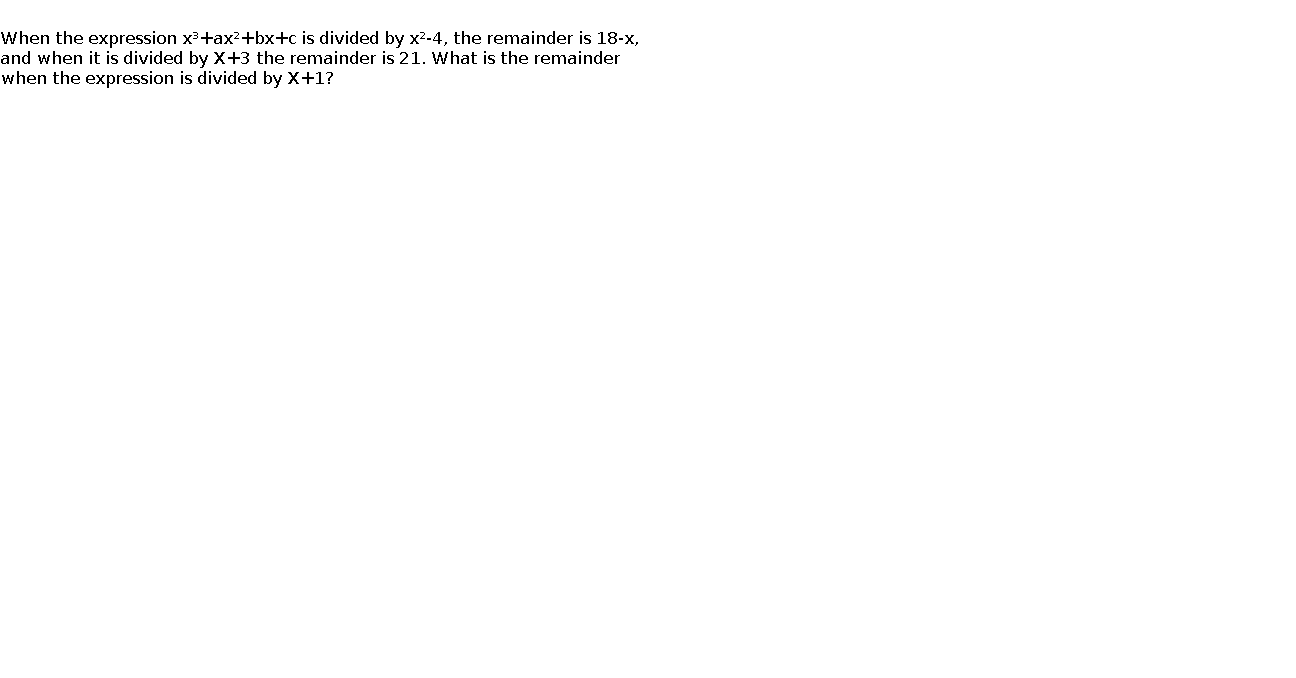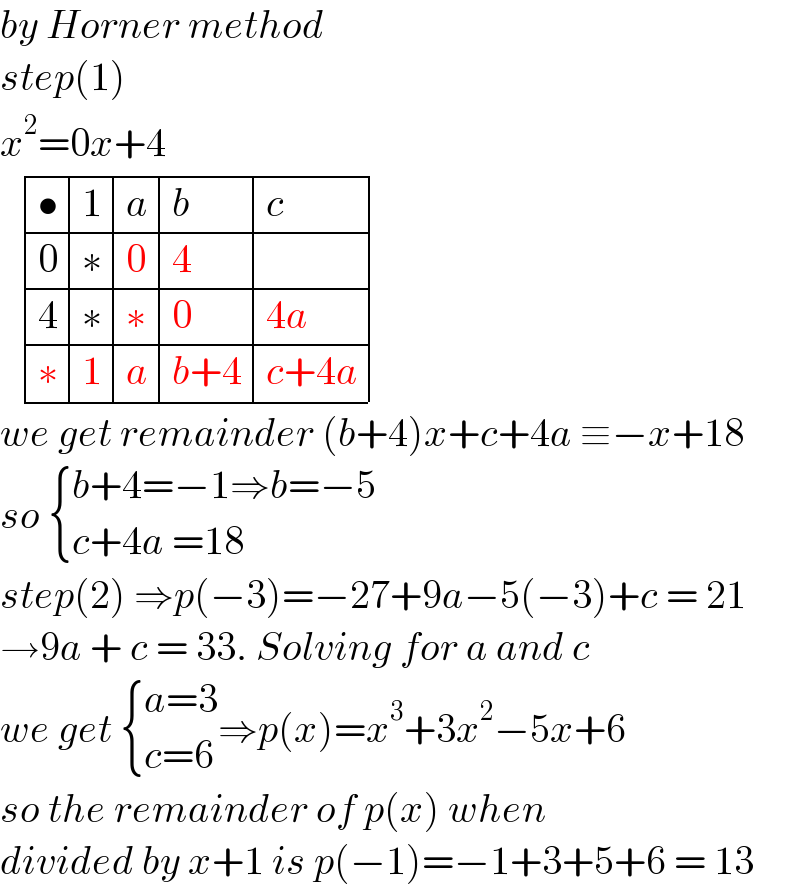
Question Number 135928 by benjo_mathlover last updated on 17/Mar/21

$$ \\ $$ When the expression x³+ax²+bx+c is divided by x²-4, the remainder is 18-x, and when it is divided by X+3 the remainder is 21. What is the remainder when the expression is divided by X+1?\\n
Answered by john_santu last updated on 17/Mar/21

$${by}\:{Horner}\:{method} \\ $$ $${step}\left(\mathrm{1}\right) \\ $$ $${x}^{\mathrm{2}} =\mathrm{0}{x}+\mathrm{4} \\ $$ $$\:\:\begin{array}{|c|c|c|c|}{\bullet}&\hline{\mathrm{1}}&\hline{{a}}&\hline{{b}}&\hline{{c}}\\{\mathrm{0}}&\hline{\ast}&\hline{\mathrm{\color{mathred}{0}}}&\hline{\mathrm{\color{mathred}{4}}}&\hline{}\\{\mathrm{4}}&\hline{\ast}&\hline{\color{mathred}{\ast}}&\hline{\mathrm{\color{mathred}{0}}}&\hline{\mathrm{\color{mathred}{4}}{\color{mathred}{a}}}\\{\color{mathred}{\ast}}&\hline{\mathrm{\color{mathred}{1}}}&\hline{{\color{mathred}{a}}}&\hline{{\color{mathred}{b}}\color{mathred}{+}\mathrm{\color{mathred}{4}}}&\hline{{\color{mathred}{c}}\color{mathred}{+}\mathrm{\color{mathred}{4}}{\color{mathred}{a}}}\\\hline\end{array} \\ $$ $${we}\:{get}\:{remainder}\:\left({b}+\mathrm{4}\right){x}+{c}+\mathrm{4}{a}\:\equiv−{x}+\mathrm{18} \\ $$ $${so}\:\begin{cases}{{b}+\mathrm{4}=−\mathrm{1}\Rightarrow{b}=−\mathrm{5}}\\{{c}+\mathrm{4}{a}\:=\mathrm{18}}\end{cases} \\ $$ $${step}\left(\mathrm{2}\right)\:\Rightarrow{p}\left(−\mathrm{3}\right)=−\mathrm{27}+\mathrm{9}{a}−\mathrm{5}\left(−\mathrm{3}\right)+{c}\:=\:\mathrm{21} \\ $$ $$\rightarrow\mathrm{9}{a}\:+\:{c}\:=\:\mathrm{33}.\:{Solving}\:{for}\:{a}\:{and}\:{c} \\ $$ $${we}\:{get}\:\begin{cases}{{a}=\mathrm{3}}\\{{c}=\mathrm{6}}\end{cases}\Rightarrow{p}\left({x}\right)={x}^{\mathrm{3}} +\mathrm{3}{x}^{\mathrm{2}} −\mathrm{5}{x}+\mathrm{6} \\ $$ $${so}\:{the}\:{remainder}\:{of}\:{p}\left({x}\right)\:{when} \\ $$ $${divided}\:{by}\:{x}+\mathrm{1}\:{is}\:{p}\left(−\mathrm{1}\right)=−\mathrm{1}+\mathrm{3}+\mathrm{5}+\mathrm{6}\:=\:\mathrm{13} \\ $$
